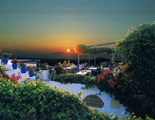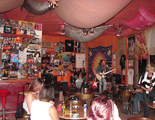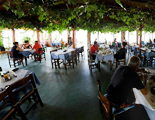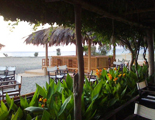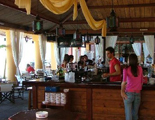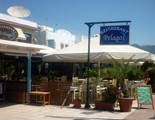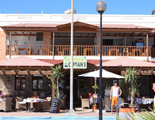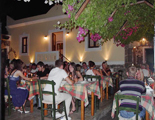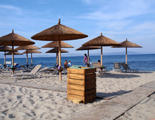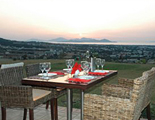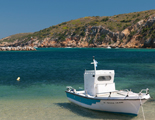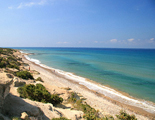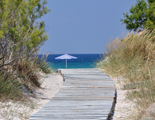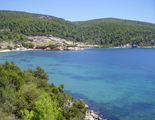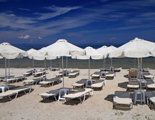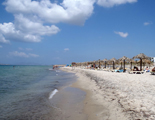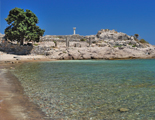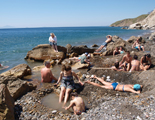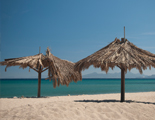 Kos Travel Guide
Kos Travel Guide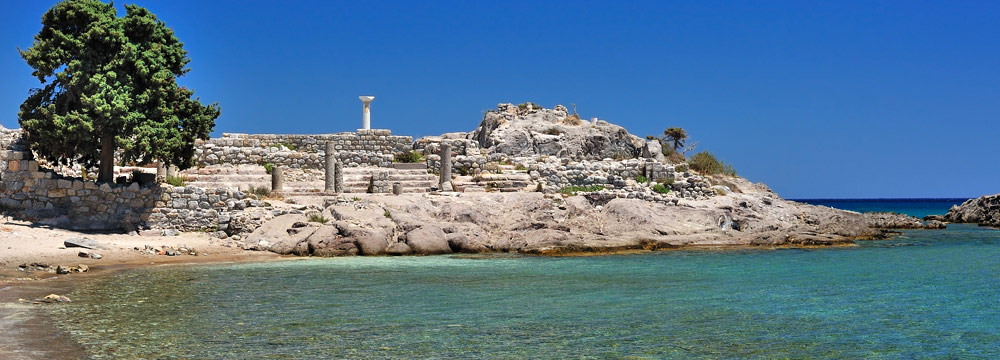
The history of Kos goes way back in time, as fossils found on the island prove that most probably it was once part of a vast mainland, known as the “Aegean Continent”.
In prehistoric times many tribes inhabited the island periodically, such as the Phoenicians, the Cretans, the Leleges and the Kareans. According to Homer, the Koans participated in the Trojan War on 1194 BC, but after the fall of Troy, Asklepeades, who were the ancestors of Hippocrates, were shipwrecked on the shores of Kos, where they started worshipping “Asklepeios the Saviour”.
During the 11th century BC, Kos, like many other Aegean islands including the shores of Asia Minor, was colonized by the Dorians and saw a great cultural and economic development. At the end of the 6th century BC, the Persian King Darios occupied many Greek cities in the Asia Minor and the island of Kos. After the Persians’ defeat in the naval battle of Salamina though, the Koans expelled the Persians and together with the Athenian Federation, governed the Aegean from the island of Delos.
During the Peloponnesian wars (431 - 404 BC) Kos allied with the Athenians and this is how democracy was introduced to the island. Culture, education and economy greatly flourished during this period.
Hippocrates, the founder of Medical Science, an important philosopher and a great humanist, was born on the island of Kos in mid 5th century BC. It seems that Kos already had a tradition in the field of Medicine, as both Asklipieio and a famous medical school existed on the island even before Hippocrates.
According to ancient traditions, Hippocrates died at the age of 104. They say that for many years a swarm of bees was flying around his tomb and the honey they produced had allegedly healing qualities!Due to its strategic geographical position Kos was continuously attacked by the Arabs and the Turks. In 1457 AD it was looted by the powerful Turkish army and later subdued to Sultan Suleiman. In 1523 Suleiman through an act of treason managed to take over Rhodes and the Knights abandoned both islands, which were left to the mercy of the Turks. The Turkish occupation lasted for almost 4 centuries and Greek culture could only be preserved through the secret teaching of language and history in hidden schools, grottos and monasteries. Persecution and killings by the Turks became almost an everyday occurrence.
In the beginning of the 20th century and more specifically in 1912, Italy took over Kos and the rest of the Dodecanese islands. The Italians were actually welcomed as liberators but, as it turned out later, the Greeks ended up under the Italian Fascist rule and went into a terrible decadence. After a short occupation by the Germans, Kos and the Dodecanese were finally reunited with Greece on March 7th 1948.
Kos has a history that goes back 3.500 years ago, while according to the Greek mythology it’s linked to the most famous hero of Ancient Greece: the invincible demigod Hercules. As most of the Greek isles, Kos had its share of different names throughout centuries. First it was “Kinnis” after the Titan Kinnos, who along with his brothers Phoedus and Chios sought refuge in the island after being attacked by the mighty Olympian Gods. Then it was “Meropis”, from Meropas, who was the prehistoric king of the island. It also got the name “Karis”, which in Ancient Greek means Shrimp, obviously from its shape and this name was also imprinted on an ancient coin found on the island. According to some historians Kos got its name from “Koon”, which was the name of King Triopa’s daughter, while according to others the island’s name derives from the Karian word “Kion”, which means Sheep, either due to Kos’s shape or maybe because many sheep lived there.
According to the Myths Hercules, after his legendary expedition to Troy, fell in a wild storm sent by Hera. We should note that Hera hated Hercules because he was the offspring of her husband Zeus and the beautiful Alkminae. Hera had to nurse baby Hercules and this is how her deep hatred was arose. Only one boat survived the terrible storm and Hercules along with a few friends managed to swim to the nearest coast which was in today’s cape Gourniatis in Kos.
The gang started wandering around the island and came across Antagoras, a shepherd. They demanded food and help from him, but the young, strong shepherd refused. Hercules and Antagoras got into a long fight and soon various companions of both of them were involved in the fight. Antagoras’ friends were from the city of Antimachia. After a while, Hercules and his friends escaped and sought refuge in the house of a Thracian woman who helped them disguise. Dressed as women, they arrived in the town of Pyli where they were welcomed and received the locals’ help. This is how Antimachia and Pyli declared war to one another. Hercules fought and killed Antimachia’s king Eurypylos. When the people of Antimachia elected Halkon as their new king, Hercules married his sister Halkiopi who gave birth to Thessalos. Thessalos later became the king of Kos and Nisyros.
According to the Greek Mythology, the Titans and the Giants dominated the universe before the Olympian Gods. Their leader Kronos was in fact the father of Zeus. When Zeus and his bothers decided to expel Kronos from his throne, a hard and violent war took place over the Mediterranean. During one of these battles, Poseidon chased Giant Polyvotis all the way to Kos. An angry Poseidon detached a huge rock from the island and threw it upon the Giant. Polyvotis, of course, didn’t die since he was immortal, but he was pinned under the rock. Angry as he was, he continued to snarl and breathe fire. And this is how the volcanic island of Nisyros was born. According to recent geological surveys, Nisyros was indeed detached from Kos after a very strong earthquake. And this is how mythology always gets interwoven with reality.
One of the most important archeological monuments in Greece is found on the island of Kos. Asklipieio was founded in the 4th century BC, in the slopes of a low hill, overlooking the shores of Asia Minor and served as a place of leisure and treatments. Located at a short distance from the ancient city of Kos and near the springs of Vourinna and Kokkinonero, it was surrounded by a sacred cypress grove.
Asklipieio is linked to the work of the founder of Medical Science: Hippocrates. Hippocrates established the Medical School of Kos, where he and his students were treating with traditional methods any known illness. Their symbol, which is also the symbol of Medicine, is the snake, since this animal has the ability to trace therapeutic plants.
This vast area included temples, various worshiping and decorative buildings, monuments, sculptures, archways, baths, a library, yards where the patients were treated, springs, statues and wells for ritual treatments while it was built on various levels of the hill interconnected with magnificent stairways. Many Gods were worshipped in Asklipieio, like Apollo, who was the father of Asklipeios, Zeus Ikesios, Athena Fatria, Apollo Karneios and Moires (Fate). Asklipieio was protected by a sacred law and it was highly honoured with athletic and religious events throughout the year.
The search for the exact location of Asklipieio started at the end of the 19th century. With the help of various salvaged, ancient sources, the famous German archeologist Rudolf Herzog with the help of the historian Jacob Zarraftis, a native of Kos, indicated the place where the excavations later started and brought to life this marvel of history.
Casa Romana, meaning “Roman House”, is an impressive building that was discovered and restored by the Italian archeological mission between 1933 and 1936. The building’s area is of 2.381 m2 and its architecture is of Pompeian rhythm, has 26 rooms, galleries and impressive mosaics. The wealth found in Casa Romana proves that in Kos there was a great middle and an upper social class that desired to demonstrate its power, status and elegance through the decoration of their residences.
The Conservatory was built in the 3rd century AD. Below the seats’ area there were 2 semi-circle archways and various rooms that were used either as shops or as workshops. The internal archways of the Conservatory were decorated with marble statues of the Hellenistic and the Roman Period, which are now displayed in the Museum of Kos. The Conservatory was used by the Senate for various meetings and it also served for numerous musical events, including sessions aiming to honour the Roman Emperors with chanted praising comments.
This building is located on Miaouli coast, inside the perimetrical walls of the medieval city. It’s the only non-administrative building left from that period, built in 1514 by Kos’ Komentori (Governor) Francesco Sans, and it consists of 2 arched rectangular halls. Initially, its main façade was towards the west, on Messologiou Street. During the Turkish Occupation, the building was used as a coffee house and two more doors were opened on its eastern side. It was restored by the 4th Ephorate of Byzantine Antiquities and it’s now being used as a library and an exhibition venue. The crests of the Gran Magister Fabrizio Del Carretto and of Francesco Sans, dated back to 1514, can be seen on the upper right side of the western entrance.
The Mycenaeans moved to the island on 1450 BC and numerous findings from that period were revealed in the hill of Seragia (today’s Old Town), where parts of a settlement and a fortification wall emerged after the excavations. The Necropolis on the southwestern part of the city belongs to the same era and it was built atop the ruins of an older prehistoric settlement.
Pre-earthquake Kos was a typical town of the 18th and 19th century, divided in districts. Rich Turkish or Greek families were living in Hora and had a country house outside the walls. The town had separate neighborhoods for Christians, Jews and Muslims. Around 1928 the Italian conquerors started renovating the big public buildings. The disastrous earthquake of 1933 basically flattened the entire city and gave the Italian administration the chance to restructure it into a new modern capital, with all archeological sites fully integrated in the urban plan.
The Castle of the Knights or the Castle of Neratzia was built by the Knights of Saint John of Rhodes and it dates back between 1380 and 1514. It was constructed with stone from the area’s grounds and materials from other buildings. The entire building is impressive, not to mention imposing, with 4 interior circular towers, gun ports, battlements, bastions and a massive drawbridge. The oldest tower on the left of the drawbridge still has the blazons of Gran Master De Milly and Gran Master De Lastic. The museum of the Castle of the Knights, whose building used to be the Knights’ warehouse, is located at the northern area and boasts several old inscriptions, marble sculptures and altars.
This perennial tree is located just across the entrance of the Nerantzia Castle and the Loggia Mosque. The fountain of the mosque bears an Arabic inscription with references to the “Water of Hippocrates”. This plane is at least 500 years old and, according to the tradition, it was planted by Hippocrates himself and he used to teach under its thick shade.
The wall of the ancient city of Kos had the shape of a ring, with a perimeter of 4 km including the settlement, as well as gardens and groves. Its northern side can be still visited, as it is an important part of the archeological site of the Port and the Market.
The Archeological Museum of Kos houses findings from all the excavations that have taken place on the island since the beginning of the 20th century at the areas of the Market, Asklipieio, the Temple of Dionysos, the Observatory and Casa Romana. This beautiful two-storey building is located on Eleftherias Street in Kos Town and the majority of the exhibits are statues, busts, sculptures, mosaics and other items from the Hellenistic and the Roman era, including the statue of Hippocrates and beautiful mosaics with the figures of Asklipeios, Orpheus and Hercules.
The Castle of Antimachia is not even nearly famous as the castle of Neratzia in Kos town, but it is of equal importance and boasts a rich history too. The castle was built by Saint John’s Knights to fortify the island’s defense and its interior was totally inaccessible by sea. Its most important historical moment was during its siege from the Ottomans in 1457, when 15 knights and 200 locals resisted for 23 days and made the 16.000 soldiers Turkish army to abandon the island. In its interior you will see the churches of Agia Paraskevi and Agios Nikolaos, as well as remnants of the church of Virgin Mary the Eleimonitria.
Mount Dikaio or Oromedon is the highest one in Kos with an altitude of 846 meters. An altar dedicated to Zeus is located on its peak and it’s said that the area was probably inhabited from the prehistoric era. The Greek monk Arsenios Skinouris created two cells on Dikaio in 1079 and, later on, the Monastery of the Metamorphosis of Jesus was established there. You will also see parts of a wall, water tanks and other ruins that belong to a small fortified settlement, dated back to the Byzantine and the Medieval era.
Location: Agios Nektarios
The island of Kos, located in the northeastern Aegean, enjoys a mild Mediterranean climate and abundant sunshine. The summers, which are hot, dry and without rainfalls, begin around May and temperatures can reach 35 degrees during the months of July and August. The evenings are somewhat cooler, however.
Spring and autumn are probably the best seasons to visit the island, since temperatures vary from 16 to 25 degrees and the sea is warm enough for a nice and refreshing swim.
The winters are mild, with temperatures dropping as low as 10C in January and February. Rainfalls are frequent between October and May, something that also explains the lush vegetation of the island.
TELEPHONE
The national prefix for Greece is +30 if you are calling from abroad. The area code for Kos is 22420 and the local phone numbers have 5 digits. If you want to place a call to another country, you have to dial this country’s national prefix (i.e. for Germany is 0049, for England is 0044 etc.) followed by the desired area code and number.
CURRENCY
Euro €
Euro Coins: 1 and 2 euro coins (gold and silver color), 10, 20 and 50 cents (gold color) 1, 2 and 5 cents (copper color)
1 euro = 100 cents / centimes.
Euro Bank Notes: Are available in 5, 10, 20, 50, 100, 200 and 500. It is not always easy to receive change for 200 and 500 Euro Notes.
BY AIR
Kos is a very popular destination. Throughout the year and especially during the summer months there are numerous commercial and charter flights that connect the island with Athens, Thessaloniki and various islands or cities in Greece, as well as many European capitals. The flight from Athens International Airport “Eleftherios Venizelos” lasts about 1 hour. Information can be sought either through the internet or through the following phone numbers:
Athens International Airport: +30 210 353-0000 / www.aia.gr
Thessaloniki International Airport: +30 2310 473700 or +30 2310 473312 / www.thessalonikiairport.gr
Kos International Airport: +30 22420 56000 / www.kos-airport.com
Olympic Air: For accurate timetable and ticket costs visit Olympic Air website www.olympicair.com
Tel.: 801 801 0101 / +30 210 3550500
Office at Kos Airport Tel.: +30 22420 28331-2
Aegean Air: For accurate timetable and ticket costs visit Aegean Air website www.aegeanair.com
Tel.: 801 112 0000 / +30 210 6261000
Office at Kos Airport: Tel.: +30 22420 51654
BY BOAT
If you choose to travel by boat you will enjoy one of the most beautiful journeys in the Aegean. There are daily itineraries between Kos and Piraeus, as well as between Kos and the rest of the Dodecanese, the islands of the northeastern Aegean and Turkey, which is only 4 nautical miles away. The trip with a conventional boat can last up to 13 hours, depending on the intermediate stopovers, and the trip with a high speed boat can last from 5 to 8 hours. To find information about the available boat rides, visit a travel agency or call the following phone numbers:
BLUE STAR FERRIES: For accurate timetable and ticket costs visit BLUE STAR FERRIES website www.bluestarferries.com.
Piraeus Port Authority: For accurate timetable and ticket costs, please call +30 210 414 7800
Kos Port Authority: +30 22420 26594-6
BUSES
Kos has a very good public transportation network and bus rides are more frequent during the summer months. There are urban buses that will take you around the town of Kos, which is the island’s capital. There are also modern long distance buses (KTEL), which will take you around the island, in major villages and numerous beaches. You can find information by calling the following phone numbers:
Kos Urban buses: +30 22420 26276
Kos Long distance buses (KTEL): +30 22420 22292
The Green and Blue trains
The scenic Green train tours visitors between 10am and 5pmthrough the historical center of Kos town and from 6pmto 10pm through the town’s busiest roads. Each tour lasts for about 20 minutes, it is repeated per 30’ and costs 5 euros for adults and 2.50 euros for children.
The Green train also takes a tour around the town of Kardamaina during the entire week, except for Wednesdays. Train departs per hour and the tour lasts for 20 minutes (same ticket prices apply).
The Blue train goes around Asklipieio and the tour lasts for 15 minutes. The trips are operated per hour from 10am to 6 pm.
Both trains tour around the following attractions:
Excavations in the western part of Asklipieio and the Ancient Acropolis
- Conservatory
- Casa Romana
- The Temple of Dionysos
- Seragia – part of the ancient city
- Modern city
- Excavations in the eastern part
- Hippocrates’ plane
- The Medieval Castle
- The small scenic port of the city
TAXI SERVICES
There are plenty of taxis that will get you both around the capital town, as well as around the island. They can be found in taxi stations, located at various popular spots. Visitors can also hail taxis on the streets or even call at one of the following numbers:
- Main Taxi Station in Kos town: +30 22420 22777 and 23333
- Taxi Station in Kefalos: +30 22420 71222
- Taxi Station in Madraki: +30 22420 31202
- Taxi Station in Pyli: +30 22420 41222
RENT A CAR - MOTORBIKE
Kos is the third biggest island of the Dodecanese, after Rhodes and Carpathos, with an area of 290 km2. It features beautiful, long, sandy beaches, scenic coves and a stunning mountainous area around mount Dikaios. Its coasts are aproximately 112 kilometers long. Kos boasts many picturesque routes that lead to beautiful little villages. The distance between the town of Kos and Kefalos, on the other side of the island, is approximately 40 kilometers, while Kardamaina, another popular region, is at 30 kilometers away from the capital. So, is it is advisable for the visitor to have a transportation means in order to get around the island since the road network is exceptional, with wide roads and a relatively flat landscape.
In order to rent a car or a scooter, you need to be 21 years old (for some big companies, such as Hertz and Avis, you need to be 25) and hold a valid driving license. Full insurance is optional. Before you sign the contracts, make sure you check the amount of gas and the condition of the car. Any scratches or damages should be noted down so you won’t be charged for them when returning the vehicle.
Bear in mind that the locals drive very fast and there are, also, a lot of agricultural areas, where tractors, animals or pedestrians might appear out of nowhere. Do not violate the speed limits and do not park in restricted areas. The municipal and the traffic police will fine you and you should definitely pay your ticket, even though the vehicle is rented. Not to mention that you should always wear your seat belts or helmets.
BANKS & ATMs
Kos Town is fairly big and many bank branches can be found there. Every bank has an ATM where you can get money 24/7. There are also ATMs scattered around the island. Remember that in order to get money you need to have a card linked to the PLUS, Cirrus or Maestro networks.
All banks are open daily, from Monday to Thursday, from 8am to 2.30pm and on Friday from 8am to 2pm. No bank is open during the country’s national and religious holidays, but the ATMs always operate. You can also use major credit cards for your transactions with hotels, shops and restaurants. Entrance to archeological sites, bars, clubs and coffee places, as well as bus tickets and taxi fares cannot be paid with a credit card.
MONEY EXCHANGE
All banks exchange mostly any major currency and traveler’s cheques. Travel agencies and 5 star hotels exchange foreign currency and traveler’s cheques too, but are usually charging a higher commission than a bank or the Post Office. There is also a dedicated exchange kiosk at Kos International Airport, as well as at Athens International Airport “Eleftherios Venizelos”.
POST OFFICE
The Greek Post Office is called ELTA. . Apart from the main post office in Kos Town, you will find many post boxes in every village and outside 5 star hotels. Regular Mail boxes are Yellow and Urgent Mail boxes are Red. If you wish to send Registered mail, you need to visit the Post Office, deliver your envelope or package and get a receipt.
Post Office in Kos Town: 12 Vasileos Pavlou Street, Tel.: +30 22420 22250.
POLICE STATION
Kos Town Police Station: +30 22420 28211
Tourism Police Station: +30 22420 22444
There are various spots especially in Kos Town where you will be able to find international press. One of them is the newspaper agency “Patmiou Bros” , located in Marmaroto (tel. 22420 21681).
HEALTH
- Health Centre: +30 22420 22300, +30 22420 23423
- Kos Municipality: +30 22420 28420
- Hospital: +30 22420 23423 and 28050
- Health Center: +30 22420 22125 and 23450
- Port authorities: +30 22420 26594
- Greek Tourism Organization: +30 22420 29200
PHARMACIES
There are several pharmacies in Kos Town and they operate:
Monday – Wednesday: 8.30am - 2.30pm
Tuesday, Thursday and Friday: 8.30am - 2.30pm and 5.30pm - to 8.30pm.
Saturdays, Sundays & national holidays: Closed
There are few pharmacies open during weekends, throughout the night or during national and religious holidays. A list of those pharmacies can be found on any pharmacy’s window around the island.
- Papachristou Zoi, 7 Ioannidou Str., town of Kos
- Zanta Markoglou, 21 Vas. Pavlou, town of Kos
- Kavouklis Sevastianos, 21 El. Venizelou, town of Kos
- Papadaki Athanasia, 7 Vas. Georgiou, town of Kos
- Peridou Ioanna, 6 Ippocratous Str., town of Kos
- Mouzourakis Evaggelos, Kardamaina, Kos
Its name fully justifies its natural beauty. This endless, 6 km long, sandy beach is nestled within a lovely bay. There are hundreds of colorful umbrellas and sun beds and the waters are shallow near the coast and gradually become deeper. A little secret: while you are swimming turn around and see the hills with the cedars and the palm trees. Nothing can be compared to this. In Paradise Beach you will have the chance to practice various water sports and you will also find many restaurants and taverns with fresh fish.
Limnionas is a small scenic cove, located north of Kefalos. It's a secluded, quiet and beautiful beach serving also as a refuge for small boats in case of bad weather conditions. In the surrounding area, there are many taverns with fresh fish while you will definitely enjoy the sun and the sea away from noise and crowds.
This is definitely one of the most beautiful beaches of the island and it got its name from the isolated chapel of Agios Ioannis Theologos, celebrated on August 29. The entire area is full of scenic coves and smaller beaches surrounded by low rocks which make this place ideal for endless, carefree hours under the sun. It is also recommended for surfing beginners. There are many taverns where visitors will enjoy fresh fish. Access is easy with the local long-distance buses, private cars, taxis and motorcycles.
This incredible beach is approximately 1 km long and it is in the northwest part of Kos town. It has an excellent tourism infrastructure and it is ideal for biking and walking due to the flat landscape. Lambi is the best beach for those who enjoy organized facilities but want to avoid large crowds. There are regular bus rides from the center of Kos town while also access by car, motorcycles and bikes is very easy.
Agios Fokas or Psalidi (meaning "scissors" in Greek) is a very popular beach due to its proximity to the town of Kos. Visitors will find here many hotels and rooms to let, mostly built right by the sea There are also many taverns with fresh fish, Greek and international cuisine. The biggest part of the beach is organized with umbrellas and sun beds, while there are also many water sports schools. Due to its location, Agios Fokas is also ideal for surfing. The view, the waters and the sunsets are just incredible.
This is a tropical paradise! An organized, 10 km long beach with golden sand, among the top beaches of the island. Its shallow waters are inviting and ideal for children and it is also windsurfing-friendly. The coastal road that connects Tigkaki with the town of Kos is ideal for bike rides. On the beach you will find many restaurants, taverns, beach bars, hotels and shops. Ideal for families due to its safe waters, but also for groups of friends and sports fanatics.
Mastihari is the second port of the island. However, it's also a truly exotic beach with white sand and turquoise blue waters. It's very well organized with umbrellas & sun beds and offers the opportunity for many water sports and mainly surfing. Visitors will enjoy the scintillating sunset, the accommodation options and the scenic fish taverns, just a few meters away from the beach.
Kefalos used to be the island's capital. The beach is famous for its crystal clear and extremely cold waters. It's very well organized with umbrellas and sun beds, while there are also many beach bars, taverns and restaurants. Water sport aficionados will appreciate the weather conditions ideal for ski, jet ski, surfing and others.
If you are in Kos, then you should definitely experience its natural spa created by hot springs gushing in a small natural lake in front of Therma beach. The refreshing sea water enters from one side, while the hot water is bubbling. Enter with attention since, once you get used to the high temperature, you won't want to come out. Even though there might be a number of people around you, the sense of relaxation prevails. The place is full of young people too, as it is widely known that hot springs are beneficial for all ages. The entire beach has a rare wild beauty as it is surrounded by large, steep rocks and its coast is full of dark small pebbles.
Kardamena is a very well known and popular beach with various accommodation and leisure options. It's a lovely sandy coast, over 3 kilometers long and it is organized. However, if you walk a little further on the right you will find its most quiet part. Dunes and cedars make this place idyllic and almost primitive. Enjoy the incredible waters away from the crowds and under the natural shade of the trees. The beach is also much appreciated by water sports fanatics!
If you are visiting the island of Kos do not forget to buy local thyme honey, Posa cheese, which is stored in red wine for extra taste and color, Kanellada, a local beverage, baklava, tomato sweet usually stuffed with almond, as well as ceramics and handmade jewelry.
During your stay on the island you should definitely taste the following local delicacies which are served in almost any restaurant:
Katimeria
Traditional sweet pies with myzithra cheese, fried in a pan with sugar and cinnamon on top.
Krasotiri Krasotiri is another local delicacy and its name in Greek means “wine cheese”, since it consists in cheese baked with red wine. Krasotiri has a characteristic pepper flavor and it is a Protected Designation of Origin cheese.
Labropita
Large round cheese pie stuffed with sweet myzithra which local people knead with a lot of eggs.
Pitaridia
Lasagna boiled in meat broth, minced meat and molten pork fat. This dish is usually served at weddings.
Xismata
Wheat bread which locals knead with grated myzithra cheese and various aromatic herbs.
Pasamakarona
It is a local, traditional and very delicious dish resembling to the famous Greek Pastitsio and it is made of pasta, pieces of meat and béchamel sauce.
Giaprakia
It is a very famous Greek “mezes”, known as “Ntolmas”, made with vine leaves or cabbage leaves stuffed and rolled with rice. In Kos they use also minced meat and, according to tradition, it represents the swaddling of baby Christ in Nativity. Kanellada syrup
A refreshing and blasting taste of cinnamon, clove and various other aromatic herbs served cold.
Maeria
A traditional sweet with honey.
no results
The island of Kos has a rich cultural history. Below you can find the most interesting cultural and religious events that take place on the island every year.
- Ippokrateia: Cultural events organized every summer during the months of July, August and September. They include musical concerts, theatrical shows, ancient tragedies, exhibitions of paintings, photography and sculpture, traditional dance recitals, educational events for children, sailing competitions and of course the recitation of Hippocrates’ oath in the archeological site of Asklipieio.
- Dikaia: Cultural events that take place during the months of July and August, organized by the Municipality of Dikaios, including dancing, singing, photography exhibition and athletic competitions.
- Heracleia: Cultural events that take place during the months of July and August, organized by the Municipality of Herakleides, including concerts, theatrical shows, traditional dancing and painting exhibitions.
- International Film Festival on Health: This Festival is in fact the meeting point for members of the medical community, artists and the public and aims at creating awareness over issues of health and disease prevention. The Festival includes the projection of movies, documentaries, original AV projects from all over the world, events and multi-themed tributes.
- April 23: Agios Georgios Festivities in Pyli, with horse racing and food
- June 29: Festivities for the celebration of the Apostles
- August 15: Festivities in Kefalos, where goat stew with rice is offered to locals and visitors, and for the Dormition of Virgin Mary in Antimachia
- August 28: Festivities for the celebration of Agios Ioannis in Mastihari
- September 8: Festivities for the celebration of Virgin Mary in Kardamaina
- October 26: Festivities for the celebration of Agios Dimitrios in Asfendio
- November 21: Celebration of Virgin Mary in Kefalos
- February: Carnival festivities and parades in Antimachia and Pyli
- August: Wine Festival in Mastihari
- August: Fish Festival and Honey Festival in Kefalos and Antimachia
Where ancient Greek beauty meets the Oriental exotic flair and Italian elegance; where the endless beaches compete with the evergreen plains…then Kos is the place.
Kos Town has a rather enigmatic and definitely multicultural atmosphere. The ancient market in full harmony with the modern buildings and the mosques, the narrow paved streets of Nafkliros, the tall palm trees dancing to the rhythms of the sea breeze and the sweet scents that emerge from the traditional little coffee places are just too charming to ignore and do not bear any comparison.
However, the beauties of Kos are not limited to its capital. At a short distance you will find Tigkaki and Marmari, whichhaven’t lost their charm and couleur locale despite being very touristic.
In the southern part of the island you will find the city of Kardamaina with the endless beaches, Antimachia with its famous castle and the rich history, and Kefalos with its quiet beach and relaxed paces.
If you happen to go to Platani village, you should definitely have a stop at the main square, where you will taste the famous oriental sweets of Maslum and Reyhan, such as kunefe, kazan dibi, sekerpare, aromatic mastiha ice cream and kadayif. You can also taste authentic oriental cuisine.
Zia is a mountainous village built within the slopes of Mount Dikaios. Charming, with lush vegetation, Zia is like an oasis during the hot summer months.
Wander around the narrow little streets with the white washed front yards and smell the scent of cypress and cedar. The panoramic view to the shores of Asia Minor, Kalymnos and Pserimos is breathtaking and it’s only 7 kilometers away from the capital. This is the best spot to see the sunset.
After Zia you can go towards the village Asomatos. In the main square you will find a hidden trail, through the oaks. After a short walk you will find the Well of Virgin Mary. They say that its waters are miraculous.
Take a ride around the city and Asklipieio with the blue and the red trains. If you take the afternoon tour, your tour will be accompanied with soft music while on board!
You will see a lot of people riding bicycles in Kos, both locals and tourists. Actually the island boasts a huge bicycle dedicated lane of about 15 kilometers thanks to its flat landscape. You can rent a bike and tour around the narrow streets, the old port with the cruise ships and the Palm Trees Avenue, which is one of the most beautiful roads in Greece.
The medieval castle in Palaio Pyli brings in mind one of the famous Mystras Castle in Peloponnese, with its deserted castle state. The difference here is that in Palaio Pyli the castle state is nestled within evergreen slopes. If you follow the steep hill, you will find a hidden café which is built inside a rock. This is where you will have the most delicious and aromatic Greek coffee.
If you are a nature lover and you do not hesitate to walk uphill for about 2 hours, then you should definitely go to the peak of mount Dikaios of 850 meters altitude. There you will see the monastery of the Metamorphosis of the Savior (Transformation of the Savior) and you will just enjoy a spectacular view. On August 6th, on the day of its celebration, , you will see the locals patiently ascend to honour it and spend the night in the church’s front yard.
If you are lucky enough to sail in the calm waters of the Mediterranean around the Dodecanese, then you will definitely appreciate the marina of Kos. It can host yachts and boats up to 50 meters long and is located in the southwestern part of the island’s historic port. It’s fully functional and provides high quality services. Today it boasts 250 berths, with permanent mooring systems, water and power supply, phone connection with a wired and a wireless network, as well as a satellite TV connection at every dock.
Kos is a very popular holiday destination and Kos Town boasts a bustling centre, filled with restaurants, shops, bars and clubs. Visitors will find practically everything, from fur to ceramics, leather products to jewelry and from shoes and clothes to books, souvenirs and beach items. The most touristic seaside villages also offer various small shops, selling mainly handmade products, such as weavings, ceramics and embroideries, as well as traditional local products, like thyme honey, sweets, herbs, spices and wine.
While you are in Kos Town don’t forget to visit the local indoor market, where you can find fresh vegetable, fruits, olive oil and local honey.
Most shops are open throughout the day, especially during the summer period (May-October). Souvenir shops may even stay open till 2am. Most of them are around Eleftherias Square and near the remains of the historical Nymphaion.
Muslim & Reyhan
Middle Eastern sweets,
Platani, Kos /Tel. 22420 21490
Hatziemmanouil Winery
Local wine varieties
Asfendio, Kos /Tel. 22420 68888
Municipal Market
Krasotyri and Kanellada
Kos Town
Angelo
Traditional products
Kos Town / Tel. 22420 29505
Woodenland
Souvenirs, Greek traditional woodshop
Kardamaina, Kos / [email protected]
Kalogirou Art
Antzique items and house equipment
28 Ifaistou Str., Kos Town / Tel. 22420 21450
Lilium
A large variety of antiques and old items.
45 Verroiopoulou & 13 Ethnikis Antistaseos Str., Kos Town / Tel. 22420 23948
Bus Stop Gallery
Paintings and a charming variety of handmade jewelry.
Pyli / Tel. 22420 42104
www.busstopgallery.kosweb.com
Gallery Korki
Lampi / Tel. 22420 27831
Bazaar
Quality leather products
Tigkaki, Kos / Tel. 22420 68558
The Light
Sweets
Kefalos, Kos / Tel. 22420 71875
Ceramic Art Workshop
Ceramics
Lagoudi, Kos / Tel. 22420 68637
Hera & Pia Shop
Various souvenirs and small items.
Mastihari, Kos / Tel. 22420 59108

 Print this page
Print this page